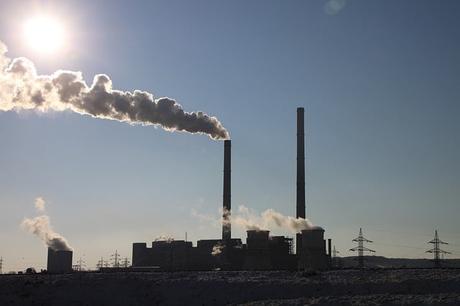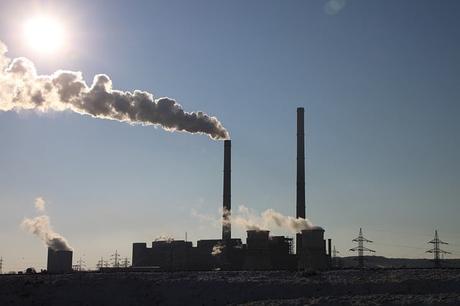In 2019, the planet-warming carbon dioxide emissions from fossil fuels hit a record high as researchers said Tuesday, failing countries to achieve their goal of halting global warming.
The new data contained glimmers of good news like industrial emissions are on track worldwide, to rise at a considerably slower pace. It is 0.6 percent this year compared to the 1.5 percent increase seen in 2017, and the 2.1 percent rise in 2018. Both the United States and the European Union managed to curtail their carbon dioxide output this year, while emissions in India grew far more slowly than expected.

The emissions from the coal, which is the worst-polluting of all fossil fuels, have unexpectedly reduced by about 0.9 percent globally in 2019. However, that drop was more than offset by strong growth in the consumption of oil and natural gas worldwide.
Scientists have warned since long that emission to grow slowly or even stay flat in the years ahead will not be helpful. There needs to be a steady decline each year, roughly reaching zero well before the century end. It is highly required to avoid many of the devastating consequences of climate change, including deadlier heat waves, droughts, and food and water shortages.
“Every year that emissions go up, even if it’s just a small amount, makes the task of bringing them back down that much harder,” said research director at the Center for International Climate Research in Norway, Glen Peters, who helped compile the data.
The Global Carbon Project reported new emissions figures in another round of United Nations talks in Madrid. The diplomats from more than 190 nations gathered to find out the means to strengthen their efforts to control the emissions of greenhouse gas, causing global warming. The report published simultaneously in three scientific journals.
During the 2000s, fossil-fuel emissions were rising by roughly 3 percent each year on average globally, mostly because of rapid coal-fueled growth in China. However, since 2010, emissions have grown gradually by about 0.9 percent per year on average, as China’s need for new coal plants has decreased. Globally governments also put their efforts to promote cleaner technologies with electric cars, wind, and solar power. Still, the progress is slow, the new reports warn.
“I do think global and national policies are making a difference, particularly by driving the rapid growth in renewables, and we’d be worse off without them,” said Rob Jackson, a professor of earth system science at Stanford University and an author of one of the studies published Tuesday. “But at the same time, it’s clear those policies haven’t been enough to stop the growth in fossil fuels.”
In recent years, natural gas, which is also a fossil fuel but less polluting than coal, has become the biggest driver of growth in emissions globally as per the new data. Japan, after the accident at the Fukushima Daiichi power station in 2011 when many of the carbon-free nuclear plants were closed down, has relied on imported natural gas. And in the United States, because of the boom in hydraulic fracturing, natural gas has recently become the largest source of electricity and also to fill the gaps during lulls in the wind and solar production.
“Natural gas may produce fewer carbon emissions than coal, but that just means you cook the planet a bit more slowly,” said Dr. Peters. “And that’s before even getting into the worries about methane leaks” from gas infrastructure.
A handful of countries are responsible for the majority of the world’s carbon dioxide emissions each year. It includes China with 26 percent, the United States 14 percent, the European Union 9 percent, and India 7 percent. Each region is struggling with its own unique challenges, the new reports show.
As the government of China continues to put money in new infrastructure to stimulate its slowing economy, emissions in China are projected to rise by about 2.6 percent this year. However, emissions in China grew by just 0.8 percent as the country is using more oil to fuel cars and trucks, and natural gas to heat homes and power factories.
The credit goes to a sharp decrease in coal-fired electricity that, in 2019, carbon dioxide emissions in the United States are on track to fall roughly 1.7 percent. However, this year’s drop in emissions is not enough to offset the 2.8 percent increase in 2018. This struggling of the country to control emissions started when the Trump administration has moved to roll back Obama-era carbon pollution regulations from vehicle tailpipes and power-plant smokestacks.
The emissions in the European Union are on track and likely to fall by 1.7 percent this year because of the emissions-trading system of the continent, pushing one-fifth of its coal power off the grid. At the same time, the demand for diesel and aviation fuel increased in Europe. It indicated that policymakers are failing to cut down emissions from cars, trucks, and planes even when there are big plans to promote electric vehicles.
India’s effort to uplift hundreds of millions of people out of poverty was perhaps the biggest surprise in the new data. In India, emissions are expected to rise a mere 1.8 percent this year after an 8 percent increase in 2018.
The researchers noted the reasons behind some of that slowdown. The weaker economic growth and strong monsoon season allowed India to generate more electricity from its emissions-free hydroelectric dams rather than from its coal plants. However, India’s government is also pursuing big plans for promoting solar power and electric vehicles. Whether those policies can help the country to restrict future emissions, it is yet to be seen.
“India is still a big wild card” for projections of future emissions, Dr. Jackson said. “So getting a handle on how much of that drop was anomalous weather and how much a change in the long-term trend is really important.”


